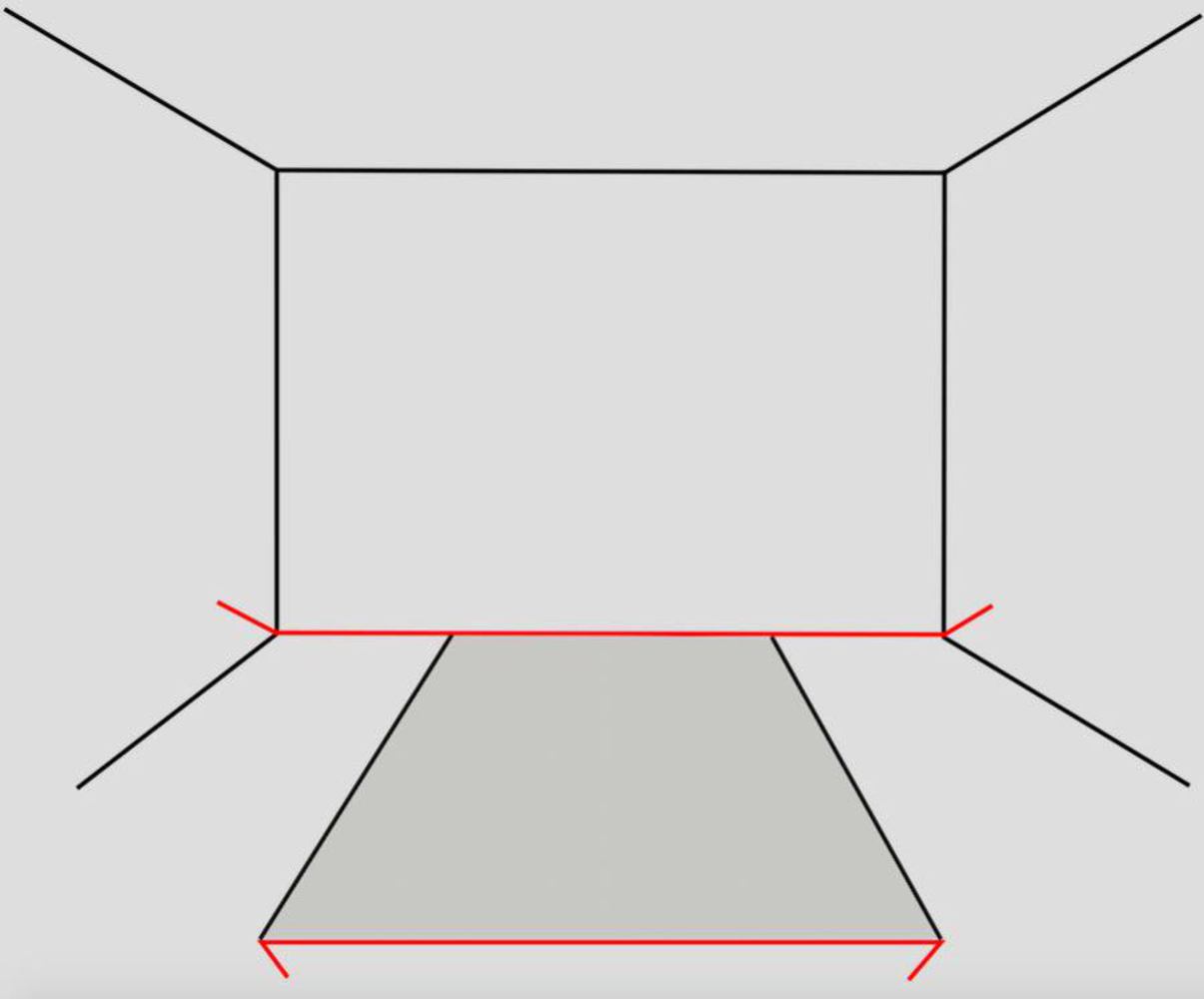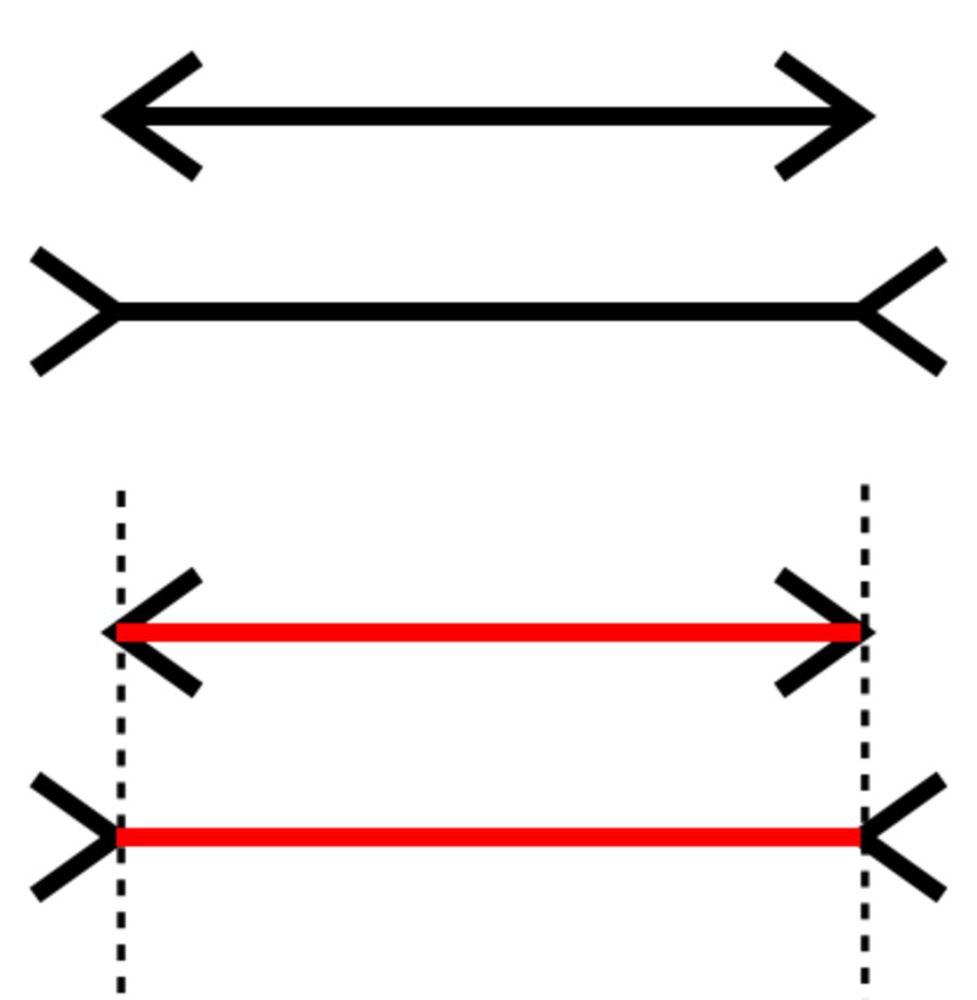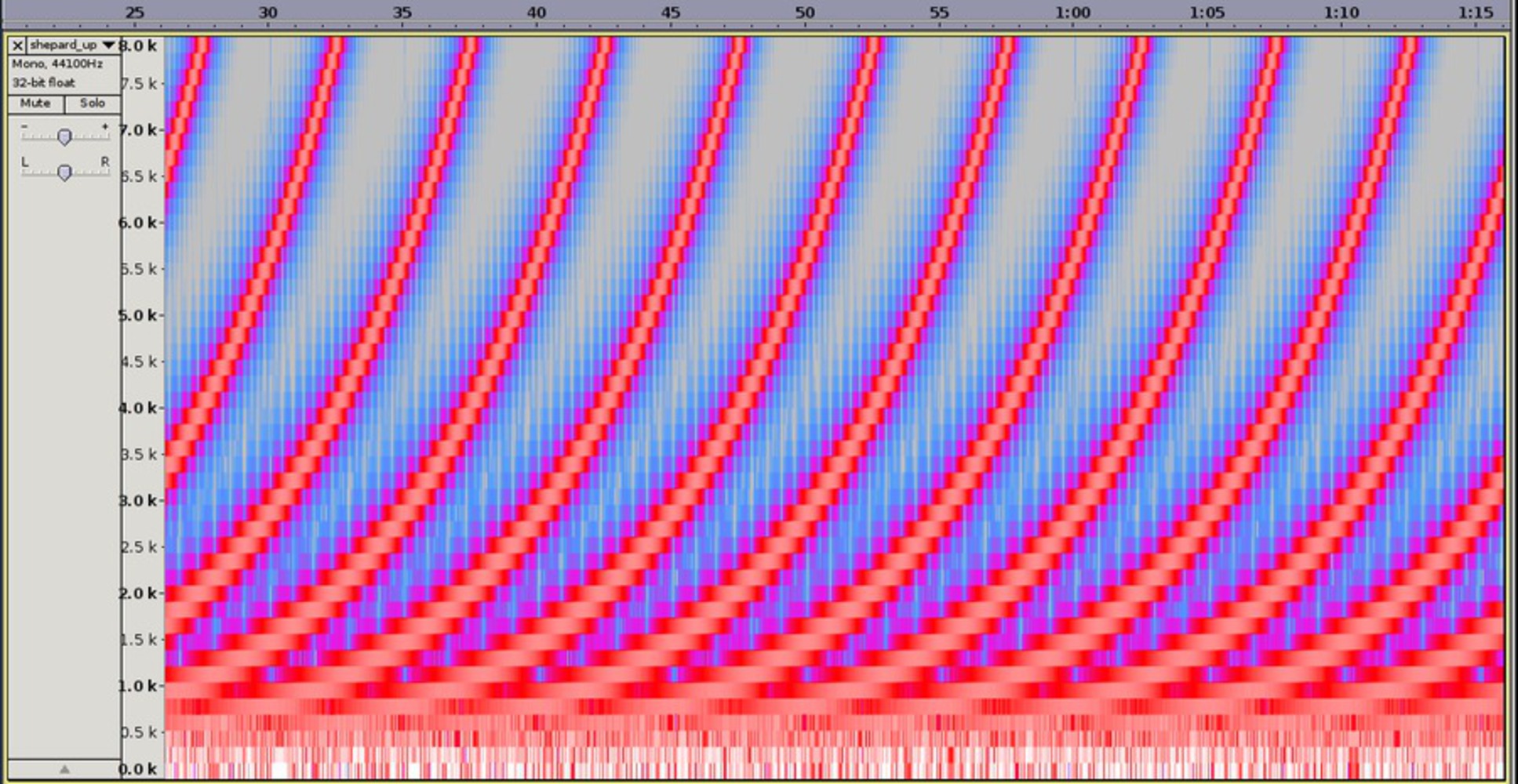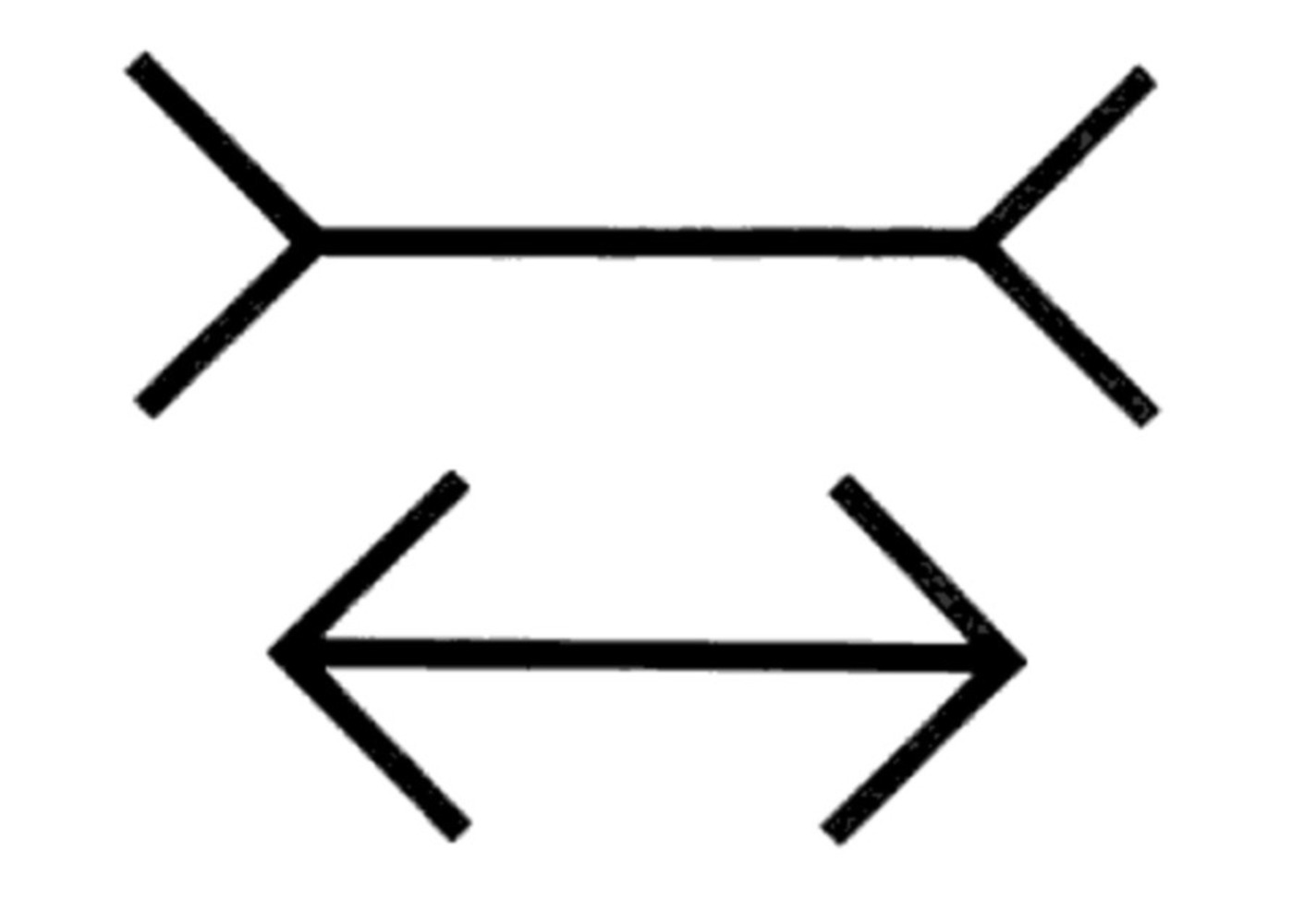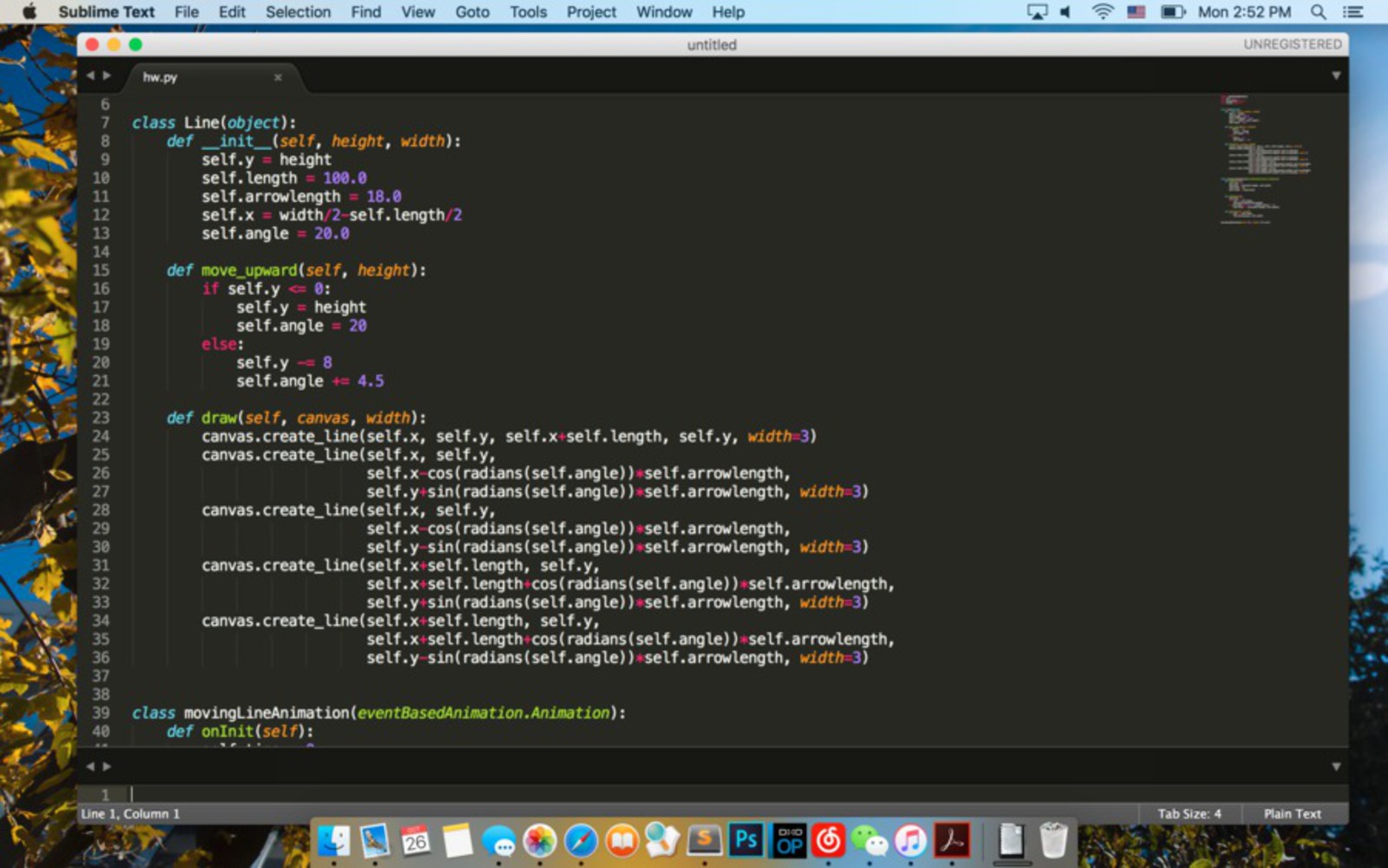Process
We first came up with the idea of the Shepard tone. And the fact that the pitch of a Shepard tone is constantly going upward lets us think about making a sequence go images moving up. First we considered using the image of the mug, however a moving mug does not really qualify as "poetic" or "beautiful". Thus, we reconsidered and decided to use the Muller Lyer illusion, which was actually the topic of Fred's last project.
For the visual part, we first tried to use Photoshop, which turned out to be more complicated than expected. So we changed to use Python. We were afraid that the "shrinking" effect won't be too obvious since the straight lines are close to each others and a viewer can easily compare the lengths. Fortunately it worked in the way that the lines do look like shrinking. Finally we made little adjustments to make it simple but still elegant. To illustrate the effect online, we used quickTime player to take screen video and then add sounds on it.
For the sound part, we searched on the Internet on how to construct a Shepard tone. We tried several times to construct one on our own but all failed. So we took several video/sound trek from youtube and used Adobe Premiere to chop off the sound and adjust it to more properly fit our need.
